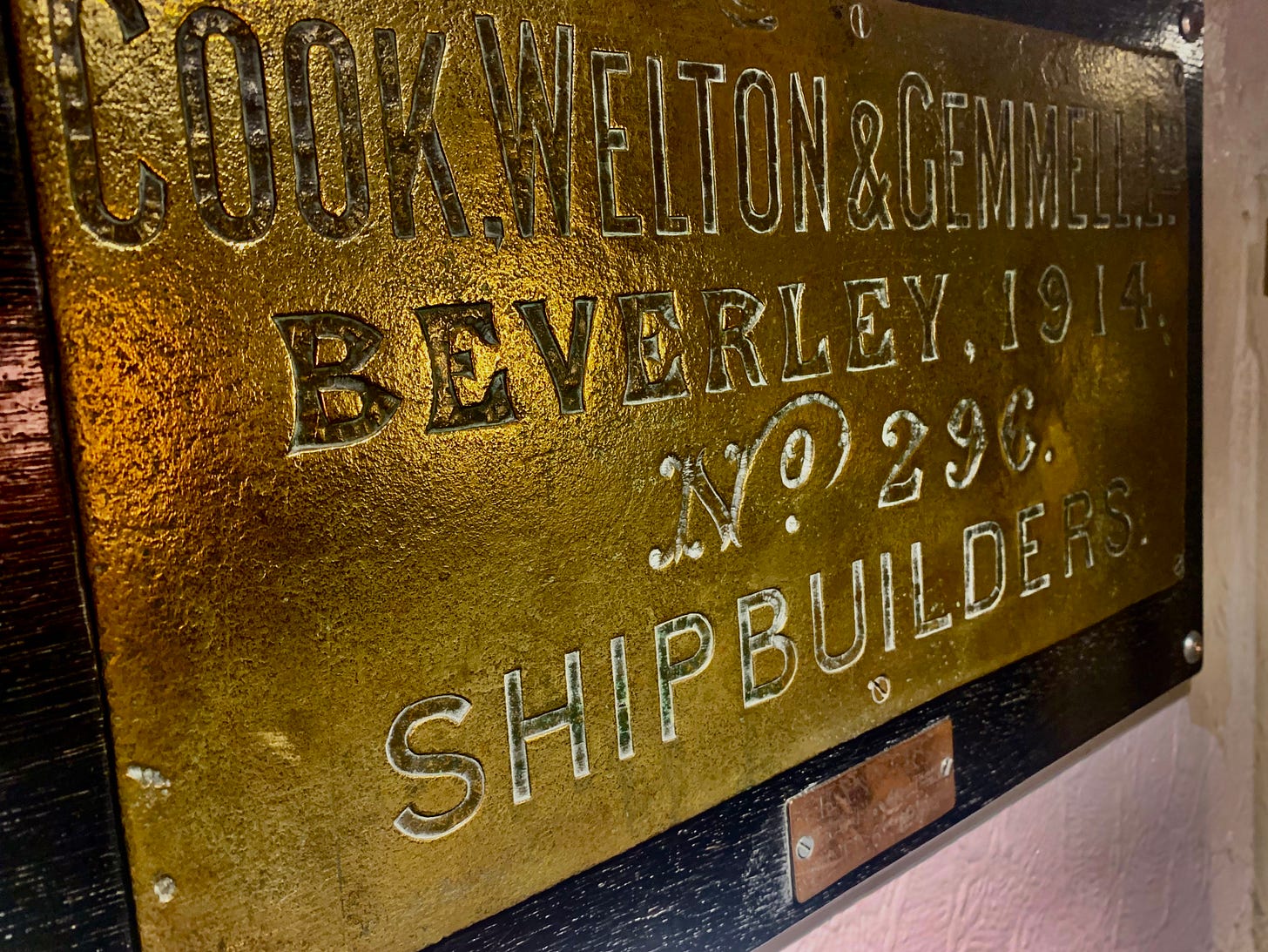When The Banyers slipped into the River Hull at the prolific yard of Cook, Welton & Gemmell Ltd., at Beverley on 9 April 1914, war was a matter of months away. For a brief period The Banyers trawled the North Sea for the South Western Steam Fishing Company of Grimsby.
However, in December 1914 she was requisitioned to be converted to a minesweeper, in this guise she would be known simply as HMT 450. She was just a few weeks into her new career, when The Banyers was sent to join the effort to clear the minefield laid by the German cruiser Kolberg between Cayton and Gristhorpe Bays, south of Scarborough.
On Wednesday 6 January 1915 The Banyers was minesweeping off Cayton Bay when she struck and detonated a mine. Two crewmen were killed instantly and The Banyers sank in the space of a few minutes. The minesweeper’s commander Lieutenant Hubert Boothby was thrown against the roof of the wheelhouse and left semi-conscious. The minesweeper’s cook placed his own lifebelt on Boothby and probably saved his life. They escaped through the wheel-house window as the vessel went down. The eleven survivors from The Banyers were in the water for twenty minutes before being picked up by a destroyer and landed on the Tyne.
The two men killed on The Banyers were:
Thomas Strickland (59), second hand, Boston, Lincolnshire
Albert Thirkettle (20), deckhand, Royal Naval Reserve, South Hales, Norfolk
The wreck of the The Banyers was discovered 19 February 1973, 2.5 miles NNE of Filey Brigg, using a side scan sonar during a cable route survey. Initially, the wreck was thought to be that of the Bywell, but the wreck was formally identified as The Banyers when she was dived on by Pete Lassey of Scarborough Sub Aqua Club on 19 July 1984. The wreck lies at a depth of 36m, orientated NE/SW, upright and stands some 4m proud of the seabed. A makers plate was recovered from the seabed, along with 3” x 6" brass and glass porthole doors.
The makers plate of The Banyers on the club house wall of Scarborough Sub Aqua Club
In 2009 Carl Racey of Scarborough Sub Aqua Club reported on the condition of the wreck:
A fairly typical trawler standing very upright, ship shape and well covered with growth. She is quite intact from the stern to the rear of the forecastle and has many areas which are half full of silt and hiding much of the machinery. The engine and single boiler are still mostly decked over, as is the stern and amidships areas. There is a large trawl winch in front of the wheel house remains, and a little forward of what would have been the fish room. Here there is a lot of damage which seems to start more to the port side. There is some wreckage laying out on the seabed but no sign of the stem post, anchors or the bow winches. It looks highly likely that a section of the bow has been blown off and detached. A fairly large mark was sounded about 20m from the main wreck which is very likely to be the missing bow section!




